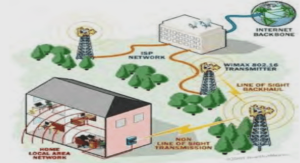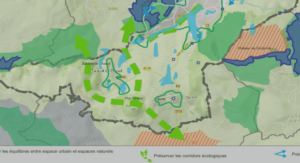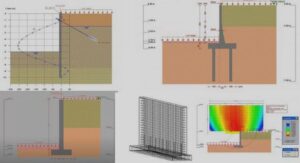Sommaire: Course wireless markup language specification
1.SCOPE
2.DOCUMENT STATUS
2.1COPYRIGHT NOTICE
2.2ERRATA
2.3COMMENTS
3.REFERENCES
3.1NORMATIVE REFERENCES
3.2INFORMATIVE REFERENCES
4.DEFINITIONS AND ABBREVIATIONS
4.1DEFINITIONS
4.2ABBREVIATIONS
4.3DEVICE TYPES
5.WML AND URLS
5.1URL SCHEMES
5.2FRAGMENT ANCHORS
5.3RELATIVE URLS
6.WML CHARACTER SET
6.1REFERENCE PROCESSING MODEL
6.2CHARACTER ENTITIES
7.WML SYNTAX
7.1ENTITIES
7.2ELEMENTS
7.3ATTRIBUTES
7.4COMMENTS
7.5VARIABLES
7.6CASE SENSITIVITY
7.7CDATA SECTION
7.8PROCESSING INSTRUCTIONS
7.9ERRORS
8.CORE WML DATA TYPES
8.1CHARACTER DATA
8.2LENGTH
8.3VDATA
8.4FLOW
8.5HREF
8.6BOOLEAN
8.7NUMBER
8.8XML:LANG
8.9THE ID AND CLASS ATTRIBUTES
8.10CONTENTTYPE
9.EVENTS AND NAVIGATION
9.1NAVIGATION AND EVENT HANDLING
9.2HISTORY
9.3THE POSTFIELD ELEMENT
9.4THE SETVAR ELEMENT
9.5TASKS
9.5.1 The Go Element
9.5.2 The Prev Element
9.5.3 The Refresh Element
9.5.4 The Noop Element
9.6CARD/DECK TASK SHADOWING
9.7THE DO ELEMENT
9.8THE ANCHOR ELEMENT
9.9THE A ELEMENT
9.10INTRINSIC EVENTS
9.10.1 The Onevent Element
9.10.2 Card/Deck Intrinsic Events
10.THE STATE MODEL
10.1THE BROWSER CONTEXT
10.2THE NEWCONTEXT ATTRIBUTE
10.3VARIABLES
10.3.1 Variable Substitution
10.3.2 Parsing the Variable Substitution Syntax
10.3.3 The Dollar-sign Character
10.3.4 Setting Variables
10.3.5 Validation
10.4CONTEXT RESTRICTIONS
11.THE STRUCTURE OF WML DECKS
11.1DOCUMENT PROLOGUE
11.2THE WML ELEMENT
11.2.1 A WML Example
11.3THE HEAD ELEMENT
11.3.1 The Access Element
11.3.2 The Meta Element
11.4THE TEMPLATE ELEMENT
11.5THE CARD ELEMENT
11.5.1 Card Intrinsic Events
11.5.2 The Card Element
11.5.2.1 A Card Example
11.6CONTROL ELEMENTS
11.6.1 The Tabindex Attribute
11.6.2 Select Lists
11.6.2.1 The Select Element
11.6.2.2 The Option Element
11.6.2.3 The Optgroup Element
11.6.2.4 Select list examples
11.6.3 The Input Element
11.6.3.1 Input Element Examples
11.6.4 The Fieldset Element
11.6.4.1 Fieldset Element Examples
11.7THE TIMER ELEMENT
11.7.1 Timer Example
11.8TEXT
11.8.1 White Space
11.8.2 Emphasis
11.8.3 Paragraphs
11.8.4 The Br Element
11.8.5 The Table Element
11.8.6 The Tr Element
11.8.7 The Td Element
11.8.8 Table Example
11.8.9 The Pre Element
11.9IMAGES
12.USER AGENT SEMANTICS
12.1DECK ACCESS CONTROL
12.2LOW-MEMORY BEHAVIOUR
12.2.1 Limited History
12.2.2 Limited Browser Context Size
12.3ERROR HANDLING
12.4UNKNOWN DTD
12.5REFERENCE PROCESSING BEHAVIOUR – INTER-CARD NAVIGATION
12.5.1 The Go Task
12.5.2 The Prev Task
12.5.3 The Noop Task
12.5.4 The Refresh Task
12.5.5 Task Execution Failure
13.WML REFERENCE INFORMATION
13.1DOCUMENT IDENTIFIERS
13.1.1 SGML Public Identifier
13.1.2 WML Media Type
13.2DOCUMENT TYPE DEFINITION (DTD)
13.3RESERVED WORDS
14.A COMPACT BINARY REPRESENTATION OF WML
14.1EXTENSION TOKENS
14.1.1 Global Extension Tokens
14.1.2 Tag Tokens
14.1.3 Attribute Tokens
14.2ENCODING SEMANTICS
14.2.1 Encoding Variables
14.2.2 Encoding Tag and Attributes Names
14.2.3 Document Validation
14.2.3.1 Validate %length;
14.2.3.2 Validate %vdata;
14.3NUMERIC CONSTANTS
14.3.1 WML Extension Token Assignment
14.3.2 Tag Tokens
14.3.3 Attribute Start Tokens
14.3.4 Attribute Value Tokens
14.4WML ENCODING EXAMPLES
15.STATIC CONFORMANCE STATEMENT
15.1WML USER AGENT
15.1.1 Character Set and Encoding
15.1.2 Events and Navigation
15.1.3 State Model
15.1.4 User Agent Semantics
15.1.5 Elements
15.2WML ENCODER
15.2.1 Token Table
15.2.2 Validation
15.3WML DOCUMENT
Extrait du course wireless markup language specification
1. Scope
Wireless Application Protocol (WAP) is a result of continuous work to define an industry-wide specification for developing applications that operate over wireless communication networks. The scope for the WAP Forum is to define a set of specifications to be used by service applications. The wireless market is growing very quickly and reaching new customers and services. To enable operators and manufacturers to meet the challenges in advanced services, differentiation and fast/flexible service creation, WAP defines a set of protocols in transport, session and application layers. For additional information on the WAP architecture, refer to « Wireless Application Protocol Architecture Specification » [WAP].
2. Document Status
This document is available online in the following formats:
• PDF format at http://www.wapforum.org/.
2.1 Copyright Notice
© Copyright Wireless Application Forum Ltd, 1998, 1999.
Terms and conditions of use are available from the Wireless Application Protocol Forum Ltd. web site at
http://www.wapforum.org/docs/copyright.htm.
2.2 Errata
Known problems associated with this document are published at http://www.wapforum.org/.
2.3 Comments
Comments regarding this document can be submitted to the WAP Forum in the manner published at http://www.wapforum.org/.
3. References
3.1 Normative References
[CACHE] « WAP Caching Model Specification », WAP Forum, 11-Febuary-1999.
URL: http://www.wapforum.org/
[ISO10646] « Information Technology – Universal Multiple-Octet Coded Character Set (UCS) – Part 1:
Architecture and Basic Multilingual Plane », ISO/IEC 10646-1:1993.
[RFC1766] « Tags for the Identification of Languages », H. Alvestrand, March 1995.
URL: http://www.ietf.org/rfc/rfc1766.txt
[RFC2045] « Multipurpose Internet Mail Extensions (MIME) Part One: Format of Internet Message Bodies »,
N. Freed, et al., November 1996. URL: http://www.ietf.org/rfc/rfc2045.txt
[RFC2047] « MIME (Multipurpose Internet Mail Extensions) Part Three: Message Header Extensions for
Non-ASCII Text », K. Moore, November 1996. URL: http://www.ietf.org/rfc/rfc2047.txt
[RFC2048] « Multipurpose Internet Mail Extensions (MIME) Part Four: Registration Procedures », N. Freed, et al., November 1996. URL: http://www.ietf.org/rfc/rfc2048.txt
4. Definitions and Abbreviations
4.1 Definitions
The following are terms and conventions used throughout this specification.
The key words « MUST », « MUST NOT », « REQUIRED », « SHALL », « SHALL NOT », « SHOULD », « SHOULD NOT », »RECOMMENDED », « MAY » and « OPTIONAL » in this document are to be interpreted as described in [RFC2119].Author – an author is a person or program that writes or generates WML, WMLScript or other content.Card – a single WML unit of navigation and user interface. May contain information to present to the user,
instructions for gathering user input, etc.Character Encoding – when used as a verb, character encoding refers to conversion between sequence of characters and a sequence of bytes. When used as a noun, character encoding refers to a method for converting a sequence of bytes to a sequence of characters. Typically, WML document character encoding is captured in transport headers attributes (e.g., Content-Type’s “charset” parameter), meta information placed within a document, or the XML declaration defined by [XML].
4.2 Abbreviations
For the purposes of this specification, the following abbreviations apply.
BNF Backus-Naur Form
HDML Handheld Markup Language [HDML2]
HTML HyperText Markup Language [HTML4]
HTTP HyperText Transfer Protocol [RFC2068]
IANA Internet Assigned Number Authority
MMI Man-Machine Interface
PDA Personal Digital Assistant
RFC Request For Comments
SGML Standardised Generalised Markup Language [ISO8879]
UI User Interface
URL Uniform Resource Locator [RFC2396]
URN Uniform Resource Name
W3C World Wide Web Consortium
WAE Wireless Application Environment [WAE]
WAP Wireless Application Protocol [WAP]
WSP Wireless Session Protocol [WSP]
XML Extensible Markup Language [XML]
4.3 Device Types
WML is designed to meet the constraints of a wide range of small, narrowband devices. These devices are primarily characterised in four ways:
• Display size – smaller screen size and resolution. A small mobile device such as a phone may only have a few lines of textual display, each line containing 8-12 characters.
• Input devices – a limited, or special-purpose input device. A phone typically has a numeric keypad and a few additional function-specific keys. A more sophisticated device may have software-programmable buttons, but may not have a mouse or other pointing device.
• Computational resources – low power CPU and small memory size; often limited by power constraints.
• Narrowband network connectivity – low bandwidth and high latency. Devices with 300bps to 10kbps network connections and 5-10 second round-trip latency are not uncommon.
…….
Course wireless markup language specification (533 Ko) (Cours PDF)




